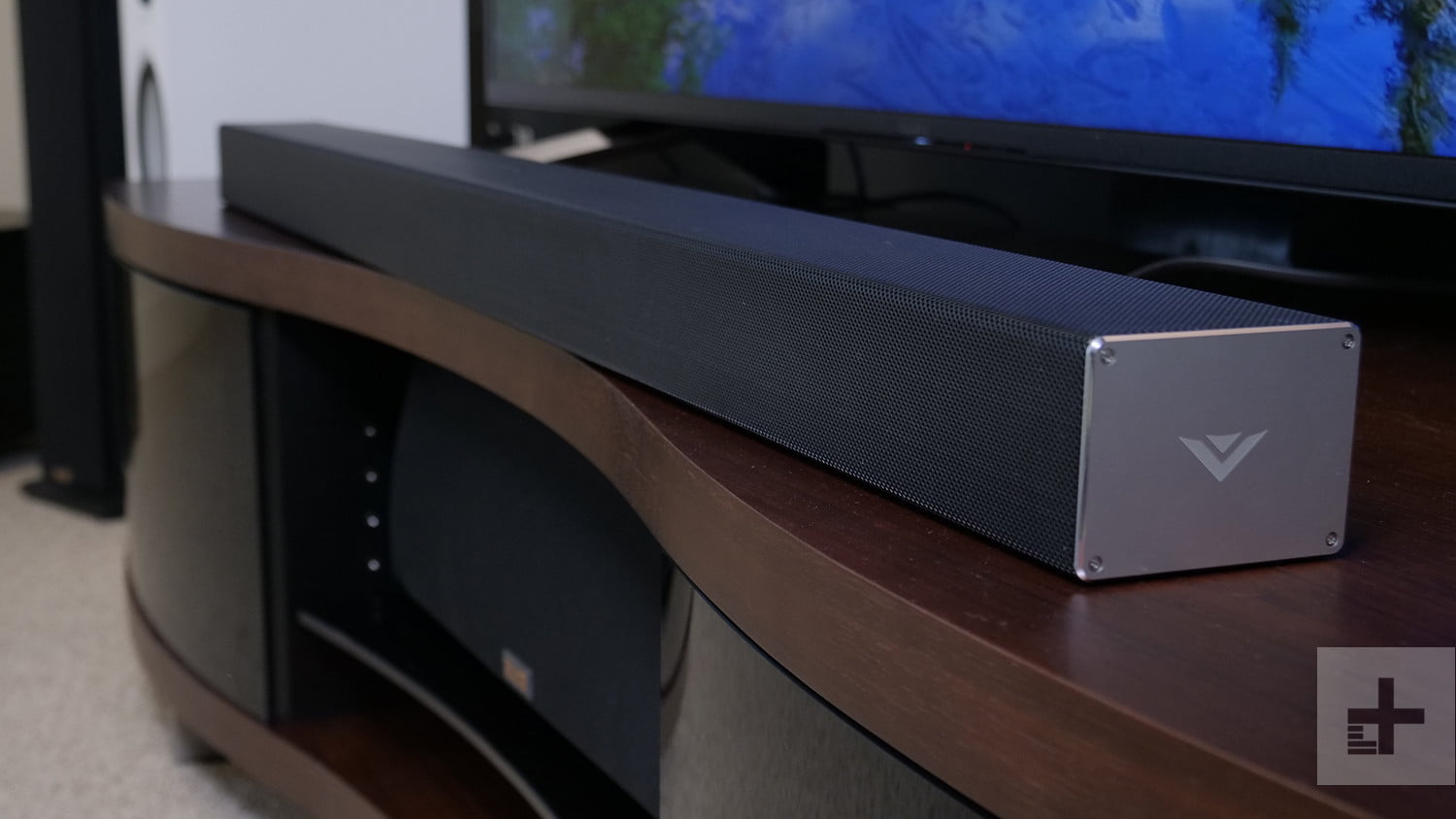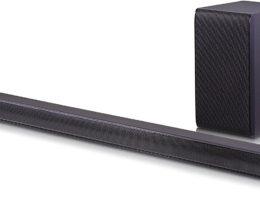For audiophiles, the fully immersive sound experience for your favorite tv shows, streaming or blu-ray movies, music, and games, sound quality is a top priority. Soundbars have emerged on the audio scene as the latest and greatest tool for pumping up volumes, but do they provide a better listening experience than surround sound home audio system speakers? Here we take an in-depth look at the soundbar vs a surround sound system debate. We break down what each offers and conclude the winner in soundbar vs speakers.
What Really Is a Speaker?
We all know what a speaker is. But how tod they really work? Before we dig deep into the soundbar vs surround speakers discussion, let’s first discuss the speaker basics. Speakers are audio output devices. Every TV, radio, computer, headphones, and smartphone has an internal small speaker to transmit sound.
How Do Speakers Work?
Electromagnetic Waves
Speakers work by converting electromagnetic waves into sound waves. When a speaker receives input, or a command, from another electronic device, the speaker interprets the data and translates it in a way the human ear can understand—vibrations.
The two basic communication methods for speakers are analog or digital. Analog speakers amplify the electromagnetic wave input, whereas digital speakers convert the data into an analog signal and then amplify generated waves of sound.
Sound
Speaker sound has a two-tiered approach to produce an audible sound. First is frequency, and the second is amplitude or volume. Speakers interpret sound frequencies and match them to produce a broad range of tones.
Without proper frequency matching, a speaker doesn’t have contrasted sound like those needed to separate low-pitched bass from the high-pitched treble.
The loudness or amplitude of a speaker uses air pressure changes to increase volume. The loudest standalone speakers have internal amplification; most modern speakers fall in this category.
Channels
Speakers usually come in pairs, which allows for different channels of audio to transmit simultaneously. The output of the speaker pairs or sets is different but together, they create stereo sound.
Most TV speakers only have 2-channel stereo sound. Each channel represents a different speaker. That is why people upgrade their speaker systems. Surround sound systems have multiple channels.
Surround Sound Systems and Channel Numbers
That is where multi-channel surround sound speakers , found in home theater systems, come in. And their opponent, soundbar systems. Surround sound systems do not always come in pairs; they instead create a more broad, full soundstage in your living room.
With several component speakers strategically placed around the perimeter of your living room, including on the ceiling in some cases, the numbering system of channels is one number for every set of speakers, respectively.
Floor and bookshelf speakers are the first number, the number of subwoofers second, and the last number is the number of ceiling speakers.
For example, if there were a home theater system with 7 channel speakers on the floor and shelves in the living room, one separate subwoofer, and four speakers on the ceiling, it would be considered a 7.1.4 surround sound audio system.
What Are the Benefits of Stereo Sound?
Stereo
One speaker would be mono. It leaves something to be desired. Two speakers is stereo. The fact that we have two ears makes stereo a much more immersive experience, especially with the use of headphones.
Each “channel” has its own signal. Although in music, each channel is still similar (as in, a part of the same song), subtle differences in each channel make a huge difference in the overall listening experience.
As the saying goes, the more, the merrier, and this is true for speakers. Surround sound speakers refer to sets of speakers operating on different channels and placed around a room to create the most realistic and immersive sound experience for media.
Surround Sound
Movie theaters were the first places to use stereo surround speakers widely. Think about the sound when you watch a movie in theaters; it’s as though the audio is coming from all directions, and it is.
Because each speaker can transmit subtle sounds on independent channels, the total sound emitted is more impactful and true-to-life.
When placed around a room properly, the sound nuances from each speaker are more refined and dynamic. This impressive sound quality directly results from the multi-channeled stereo speakers.
Surround Sound History
Surround sound isn’t a new concept. In 1940, Walt Disney’s “Fantasia” was the first film reporting to have used surround sound.
Although surround sound technology wasn’t adopted in a mass capacity at that time, the technology has gained supreme popularity in modern times. Most home theater speaker sets on the market today use surround sound technology to bring the most powerful audio to the average household.
What Is a SoundBar?
Soundbars are an elongated, horizontally aligned collection of small stereo loudspeakers that transmit audio. They are modern editions to many home entertainment centers that broke out in the 90s and gained wider popularity around the dawn of the 21st Century.
How Does a SoundBar Work?
A soundbar usually features several speakers in a row that work with stereo sound on different channels. A soundbar rests on the entertainment center near the TV to project audio outward.
Soundbars are simple to use and require minimal setup. That they are so easy to use is one of the biggest reasons people buy them.
What Should You Look for in a Soundbar?
There are tons of soundbars on the market today, and sorting through all the options can feel overwhelming. When buying a soundbar, there are three things to remember: active, 3.0+, and HDMI ARC.
Active
Most soundbars these days are active (rather than passive). Active soundbars don’t require any external amplification, and passive soundbars do. The passive variety needs the help of an AC receiver to transmit sound. For the most straightforward setup, always go with the active option.
3.0+
This number refers to the number of channels a soundbar has. Anything over three channels will provide sufficient sound quality. Three channels give a right, left, and center channel driver (right, left, and center speaker) to create quality stereo sound. If you want a subwoofer added to the mix, look for a 3.1 channel soundbar.
HDMI ARC
This feature is crucial if you hope to control your TV volume from the soundbar with a single remote. You can get away with using multiple remotes, but if keeping track of excessive remotes isn’t your thing, definitely choose this feature.
Soundbar vs Speakers: 6 Differences
Now let’s explore the soundbar vs speakers question. What you’ll find is that both speakers and soundbars could work for you, depending on your audio needs. In the following section, we break down soundbar vs speakers for design, sound quality, and which is the best choice for different needs.
Chances are when you are investigating your options in soundbar vs speakers, you have probably run into poor speaker quality on your TV or computer. The picture may be great, but if you can’t hear what’s going on, the whole experience crumbles. Fortunately, we live in technological times, and you have options. Below we tell you what to expect from those options.
1. Design
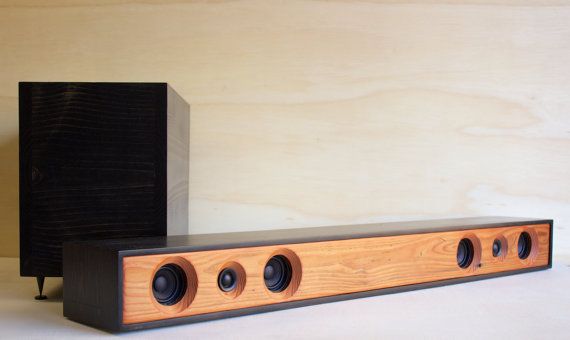
Soundbar Design
If you don’t have a lot of space, or if the thought of many boxes scattered about your room isn’t appealing to you, a soundbar might be a good alternative. The speakers with soundbars are compact, and the entire unit fits neatly in one space—but they always pack a good punch for their size.
Surround Sound Speakers Design
If you like options, speakers come in a greater variety of designs and sizes than soundbars. The one caveat is that surround sound speakers are a set of multiple speakers that must fit in more than one place of a room.
For example, the “behind” speakers will likely need shelves to sit on, or they’ll need to be mounted to the wall.
2. Setup
Soundbar Setup
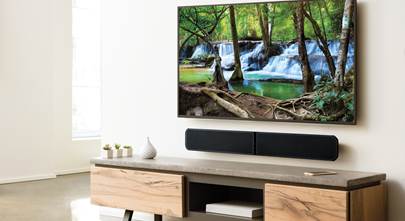
For a quick audio fix, many people choose a soundbar to improve sound on TVs. Soundbars are comfortable because they require little setup.
For active soundbars, you unwrap the speaker, plug in a few cables, possibly adjust a configuration on your TV and pump up the volume. A passive soundbar will require a receiver, but most soundbar manufacturers don’t go this route anymore.
Surround Sound Speaker Setup
Conversely, setting up speakers to amp your TV’s audio is a little more challenging.
First, you likely must use an AV receiver to connect the speakers. Some speakers are plug and go, but mostly, quality sound speakers need a receiver.
The process includes first setting up the receiver to your computer or television, then hooking up the speakers. Some receivers will even be compatible with Amazon Alexa.
Once you’ve hooked everything up, you might realize that cords are dangling, and the placement of the speakers isn’t working for you. Depending on which sound system you’ve opted for will determine your placement options.
Wireless surround speakers are a great option as well, but wireless connections to have a slight effect on overall sound quality.
3. Placement
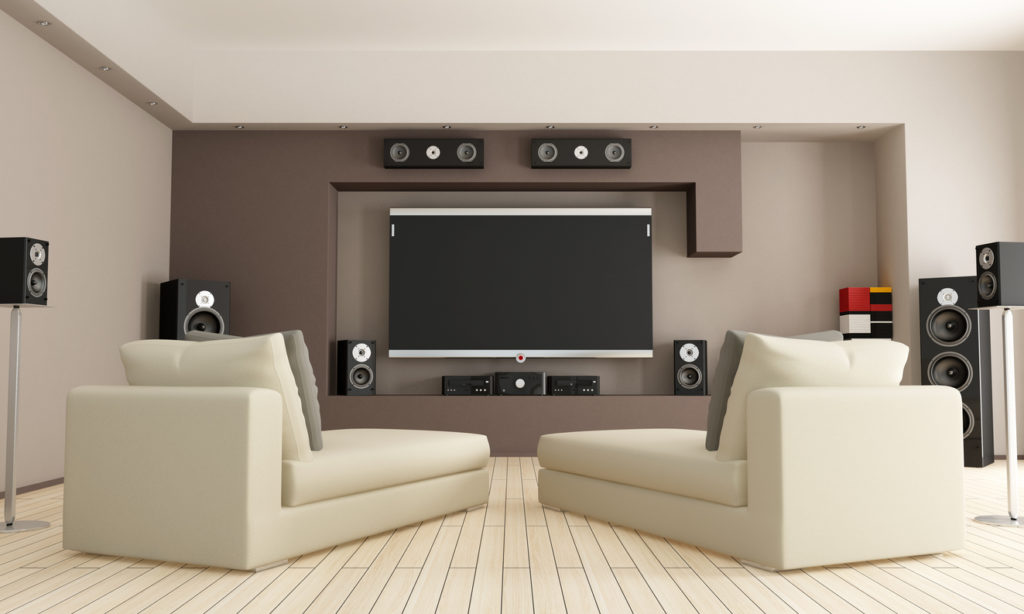
Soundbar Placement
Soundbar placement is straightforward. The long horizontal bar fits nicely on TV stands or even on the ground.
It doesn’t take up too much space and is inconspicuous. Some soundbars come with wall mounting brackets if that appeals to you. If your soundbar didn’t come with mounting brackets, third-party vendors sell them.
Surround Sound Speakers Placement
Speaker placement is a little different. If you have speakers with wires, you must take the length of the cables into account when placing them—although they are usually designed with long wires when necessary.
If the speakers are wireless, then you have more flexibility, but the placement issues don’t stop there. For the best surround sound experience, you must find the most suitable places in the room to place or mount all the speakers. After that, you might spend some time securing wires to walls or under rugs to prevent tripping.
4. Audio Quality
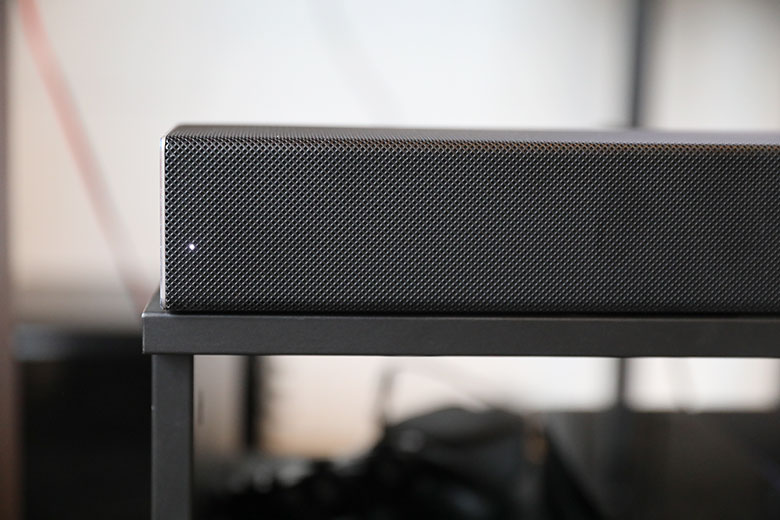
Soundbar Audio Quality
Depending on the quality of the speakers in the soundbar unit, the soundbar could produce great sound. However, even though some soundbars market themselves as surround sound, the very design of the unit defies this claim.
For a true surround sound experience, you must have speakers placed around a room, and a soundbar is a single stationary unit often placed in front of the TV. Many soundbars have the option to get additional rear speakers, and many come with subwoofers.
Surround Sound Speakers Audio Quality
The quality of audio produced by speakers is ultimately dictated by the quality of the speakers. No matter how many speakers you add to your surround sound unit, if the quality is lacking, the overall output will lack too.
If after sound quality trial, you’ve found that your choice for audio enhancements just isn’t cutting it, you may have further options.
5. Add-Ons
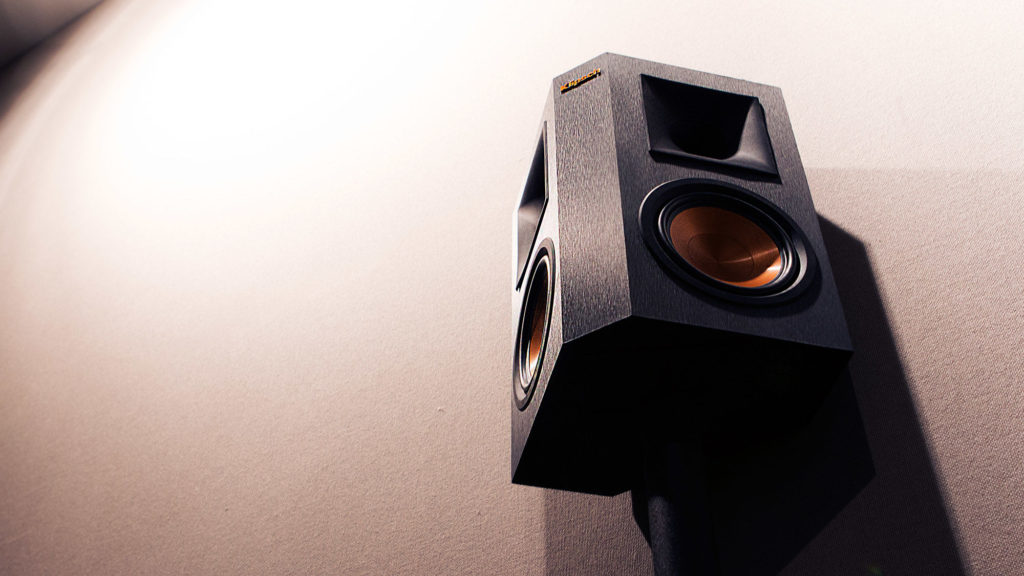
Soundbar Add-Ons
Even the best soundbars have a terrible reputation for not playing well with others; that is, they aren’t always compatible with other speakers. Sometimes soundbars work with speakers made by the same company, but not always.
If you aren’t entirely happy with the output of the soundbar, you might be hesitant to buy more speakers from that company. Be sure to do your research ahead of purchasing if you plan on combining speaker options.
Surround Sound Add-Ons
The number one reason to opt for surround sound speakers instead of a soundbar is that they, in conjunction with an AC receiver, offer the most flexibility for adding new components.
Be sure to pay attention to compatibility, since if they are passive speakers, you will need to make sure they’re the right wattage for your head unit.
6. Durability
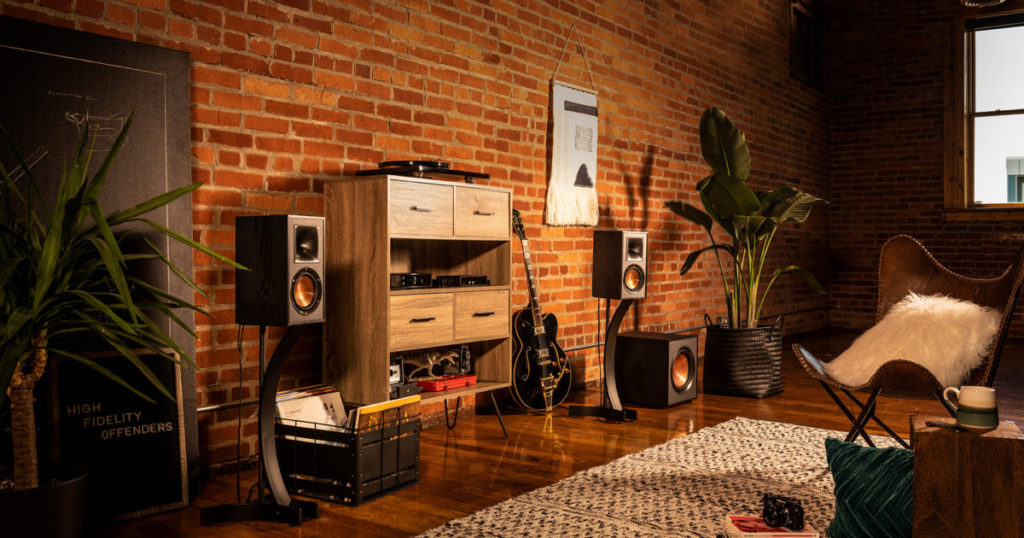
Soundbar Durability
As with all products, the strength of the soundbar is based mainly on how well it is constructed. Durability with vary with brand and model. But overall, the simple and compact design does have something to offer in terms of keeping them safe.
Surround Sound Speaker Durability
Some speakers are built to last, and others are not. It is common to find vintage speakers with a crisp sound quality after 50 years or more. Then again, many cheaply made speakers quit just past the warranty’s anniversary date.
The Right Solution for You
Finding the right solution for your audio needs depends on what sound you are looking for. We’ve seen in this soundbar vs surround sound speakers discussion that there is no one-size-fits-all approach to buying.
For those who want a compact stereo quality speaker set with an easy setup and use, a soundbar could be the perfect hassle-free solution.
For anyone who wants the immersive, surround-sound experience, surround sound speakers are the clear choice—OR, go with a soundbar system that has both a subwoofer, and additional surround sound speakers.
Overall, in most cases, a separate speaker surround system will offer much better sound, but when cost and portability come into play, the soundbar starts to look pretty good too.

